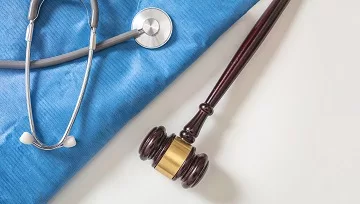Generally speaking, people do not act maliciously towards each other in ways that they think will lead to serious injuries or worse. However, despite best intentions, accidents do occur and people do make mistakes that cause suffering in others. When these situations arise, people need to be able to stand up for their legal rights so that they can recapture the losses they have incurred and be made as whole as possible. The way to accomplish this is to file an Alaska personal injury lawsuit against those who may be responsible for their current position.
Despite the plethora of advertisements that imply that securing compensation in a personal injury lawsuit is a relatively simple matter, the fact is that obtaining a favorable result requires the successful completion of many different steps. Below you will find a brief description of the different elements that go into proving a case for someone who has been wrongfully harmed. Anyone who does face this situation needs to obtain the help of Alaska injury lawyers as soon as possible.
Legal Duty of Care
The first element that must be proven when someone files a personal injury lawsuit based on negligence is the presence of a legal duty of care. This duty is basically a legal notion that requires people to avoid actions that could cause serious harm to other people whose suffering could be foreseen. In short, a plaintiff must prove that he or she should have been protected from the dangerous actions of the defendant.
Breach of Duty
Secondly, a plaintiff in a lawsuit must prove that the defendant breached the legal duty of care. This is usually done by having a jury consider the defendant’s actions based on the reasonable person standard. If the defendant did not act in a way that a reasonable person would have in a similar situation, then the defendant breached that legal duty of care.
Causation
If the plaintiff accomplishes the tasks described above, then he or she will need to prove causation. Causation in its most basic form involves the connection between the actions of the defendant and the harm that was suffered by the plaintiff. This connection can be direct or indirect, and there are several different tests and exceptions to this element.
Damages
Finally, if the plaintiff has proven all three of the elements above, he or she must then prove that actual damages were incurred. These damages can be direct and tangible such as with medical costs or lost income or they can be intangible and involve losses such as those for pain and suffering. Regardless of the specific forms of loss, they must be proven in court.
As can be seen, winning a personal injury lawsuit is relatively involved for those who choose this undertaking. If you or someone you love has been harmed by the actions of someone else, you need to seek the help of Alaska injury lawyers who have been fighting for the rights of clients for many years. Contact Barber and Associates, LLC today to schedule a free initial consultation.
